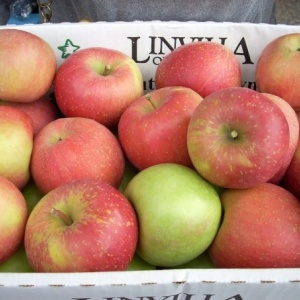
FCRN member Elinor Hallström of the Research Institute of Sweden has authored a systematic review paper on how dietary quality scores are used in environmental sustainability assessment of food. The paper identifies two broad types of dietary quality scores and four different approaches to integrating nutritional and environmental assessments. It finds that both the type of dietary quality score and the way it is combined with environmental assessments can make a difference to which foods appear more sustainable.
The two broad types of dietary quality score were:
- Ratios between nutrient content and a reference amount for several nutrients, e.g. grams of nutrient per 100 kcal of food
- Scoring based on whether or not various positive or negative criteria for healthy eating are fulfilled.
The four ways of combining environmental and nutritional assessment were:
- Separate assessment
- Optimisation based on both nutritional and environmental impact
- A ratio of environmental impact to dietary quality
- An integrated sustainability score based on both nutrition and environment.
Hallström et al. note that the choice of method to combine nutritional and environmental assessment depends on the purpose of the study, e.g. optimising whole diets or ranking individual foods. Furthermore, the choice of method can affect the results. For example, some of the reviewed studies took the climate impact to be representative of overall environmental impacts, which could favour foods that have a low carbon footprint but high impacts in other categories such as eutrophication or water use.
Abstract
The increased recognition of inter-relationships between the environmental and health effects of food has resulted in a new fast-growing research area. Development of methods for integrated analysis of environmental and nutritional impacts is essential to facilitate policy decisions and actions for sustainable food systems. Dietary quality scores is one of the methods suggested to combine environmental and nutritional assessments of foods, meals and diets. This systematic review provides an overview of how dietary quality scores are used in environmental sustainability studies of food products and diets. The review includes 24 articles applying 20 different types of dietary quality scores. We describe current approaches used to combine environmental and nutritional assessments, discuss methodological choices of importance and their impact on results, and identify research gaps that require further efforts to push the current frontier of knowledge. Based on our analysis we identify two different categories of dietary quality scores and four approaches used to integrate environmental and nutritional assessments. There is a large number of methods available to quantify a dietary quality score: which one is chosen as well as how they are combined with environmental assessments can affect the results, and hence also the conclusions of which foods that are more sustainable to eat. This is critical to understand for the set-up of studies and for the interpretation of results and drawing conclusions. Our categorization of existing methods used, how they differ, what applications they are suited for, and which methodological challenges they involve increases the understanding of what analyzes are possible today and point out areas where methods are lacking and where more research is required. Continued efforts are needed to bring about a transition to sustainable food systems that do not exceed the planets ecological limits and promote healthy populations. This systematic review provides guidance for future use and development of methods within the field of sustainable nutrition.
Reference
Hallström, E., Davis, J., Woodhouse, A. and Sonesson, U., 2018. Using dietary quality scores to assess sustainability of food products and human diets: A systematic review. Ecological Indicators, 93 (2018), pp. 219–230.
Find the full paper here. It can be downloaded for free until 10 July 2018. You can contact Elinor Hallström at elinor.hallstrom@ri.se. See also the Foodsource chapter What is a healthy sustainable eating pattern?







Post a new comment »